DADA OUTSIDE ZURICH
 |
| A Brief History of Dada |
Francis Picabia brought to Paris the discoveries of those in America who had gone down the Dadaist road. The American avant-garde knew nothing of the Dadaists of Zurich, yet they were motivated by the same nihilism that had become a generalized feature of this artistic generation.
The movement for freedom in art got underway earlier there than in Europe. In 1913, an international exhibition of modern art took place in New York, now well-known under the name of the “Armoury Show”.
The modernist tendencies of European painting were represented in it; in particular, Marcel Duchamp’s picture Nude Descending a Staircase, and two pictures by Picabia, Dances at the Spring and Procession to Seville, were on display — they all provoked outrage and enjoyed success.
He studied at the Ecole des Beaux-Arts and the Ecole des Arts Décoratifs, and from 1899 he showed his work at the Salon des Indépendants. In 1909, he painted his first abstract picture, Rubber.
In 1910, he met Marcel Duchamp. In the nihilist movement in the United States, along with Americans, there were Europeans who had taken refuge from the war.
Several avant-garde groups arose in New York. Artists and poets gathered around journals or galleries.
Duchamp was exempted from his military service, and preferred to take refuge from the ostentatious patriotism of a warlike Paris in the United States.
Picabia had been mobilized in the capacity of a driver to one of the generals and ordered to a post in Cuba, but he preferred to remain in New York.
The three Duchamp brothers and their sister, like their grandfather before them, chose the path of the artist.
Marcel came to Paris in 1904, where he studied at the Académie Julian. In 1910 and 1911, he was passionate about mathematics.
Along with Fernand Léger, Jean Metzinger and Juan Gris, Marcel Duchamp organized an association called the “Section d’Or”.
They were all engaged in an enthusiastic search for the mathematical foundations of art. In 1912 Marcel Duchamp painted Nude Descending a Staircase — a Cubist picture, close to Italian Futurism.
Duchamp conveyed the movement of a human figure through multiple repetitions of its outlines.
Picabia’s friends founded a journal which they named 291 from the number of the house on Fifth Avenue where Stieglitz’s gallery was located.
To the American intellectuals, Duchamp and Picabia were the incamation of the revolt against bourgeois art.
Duchamp strove to put an end to traditional, customary easel-painting. Although they were unfamiliar with the positions of the Dadaists of Zurich, they were traveling in the same direction.
“Every pictorial or visual work is useless”, Tristan Tzara declared. At the same time in New York, Duchamp was exhibiting what was called ready-mades, not pictures, but objects of everyday use elevated to the status of a work of art merely by virtue of his choice.
Man Ray was the most prominent among the many Americans who understood the point of Duchamp’s original lessons.
His individual exhibition took place on October 1915 at the Daniel Gallery, where he demonstrated his solidarity with his French friend, as well as his talent and his sense of humor.
The real explosion in the artistic life of New York was an exhibition at the Grand Central gallery in March 1917.
It was organized in the manner of the Paris Salon des Indépendants — each contributor who put in $6 had the right to show any work without the need for it to be approved.
Under the invented name Richard Matt, Marcel Duchamp submitted to the exhibition an everyday enameled urinal which he called Fountain. When the organizers refused to exhibit it, Duchamp stormed out of the exhibition’s organizational committee.
In June 1917, Picabia published in New York three numbers of his own journal, which he named 391, in the wake of Stieglitz’s journal 291.
In this way, the most an important consequence of the emergence of the American Dadaists was the formation in New York of three outstanding personalities – Duchamp, Picabia and Man Ray.
During another visit to New York, Duchamp and Man Ray were involved in bringing out the journal Societé Anonyme, which publicized avant-garde art.
In the summer of 1921, they both arrived in Paris where Dadaists from other European capitals were gathering.
Its author was someone from Zurich, Huelsenbeck, but it was also signed by Tzara, Janko and Dadaism’s Berlin adherents — the writer Franz Jung, the psychoanalyst Otto Gross, the poet Raoul Hausman and Gerhard Preiss.
It was aimed against Futurism and German Expressionism and advocated the renewal of poetic forms.
Young artists joined them as well, the most brilliant of whom were the caricaturist Georg Gross and the committed Marxist Johann Hartzfeld.
Hartzfeld even changed his German name to the English-sounding John Hartfield as agesture of protest against German patriotism. Hartfield got the nickname “the Dada-Fitter’ for the witty works he produced using the photomontage technique.
The Berlin Dadaists publicised their movement and read lectures on Modernist art.
The turbulent political events in Germany — hunger strikes, spontaneous worker demonstrations, the brutal repression of the Sparticist uprising, the murder of its ring-leaders, Karl Liebknecht and Rosa Luxemberg — presented the artistic avant-garde with a choice and they had no hesitation in taking the side of socialist forces.
Their journal, called Der Dada, openly incited revolt. At the beginning of 1920, the Berlin Dadaists organized a demonstration on a grand scale.
In the gallery of Dr. Otto Burkhardt, they amassed 170 Dadaist works, not only from various cities in Germany, but also from Amsterdam, Antwerp, Zurich and even Paris. The exhibition was titled “Erste Internationale Dada Messe”.
Kurt Schwitters, who lived and worked in Hanover, was one of the most brilliant representatives of Dada, embodying its individualistic, anarchistic character.
A pupil of the academies of painting in Dresden and Berlin, he completely rejected traditional painting, and created his own individual aesthetic.
He collected rubbish, bus tickets, scraps of posters and so on, which he used instead of painting materials to produce abstract compositions.
In one of them, a scrap of the word “KomMERZbank” turned up, and he started to call his creative work “Merz”, which was no less absurd a name than Dada itself.
The spontaneous method of work on the Merz compositions, together with the results of the method — the abstract “colors without form” — positioned Schwitters in the first rank of those artists from Dada who became the founders of Surrealism.

Max Ernst lived in Cologne. Drafted into the army for the duration of the war, Ernst returned to his native Westphalia in 1919.
Hans Arp came to him in Cologne, bringing with him his experience of the Zurich Dadaists. Ernst and Arp were joined by a Cologne artist and poet who was well-known under the pseudonym of Johannes Theodor Baargeld.
The young Cologne intellectuals, like their counterparts in Berlin, were involved in the revolutionary movement of 1918 and 1919. Under the influence of Arp, the Cologne Dadaists preferred to confine their activity entirely within the framework of aesthetics.
It is particularly interesting that these three — Ernst, Arp, and Baargeld — worked in the field of collage. Ernst used images he had cut out of didactic works.
Arp chaotically distributed the configurations that he had arbitrarily cut out over cardboard. Baargeld made extremely varied Dadaist compositions.
Together they created anonymous works which, as a joke, they called “Fatagaga” — “Fabrication de tableaux garantis gazometriques”.
The culmination of the Dadaist performances in Cologne was a scandal at the back-door of the Wintera beer-cellar in April 1920, when the exhibitors’ defiant behavior irritated viewers.
In the exhibition, objects were shown which the viewers could not understand, and which were painted with a very individual sense of humor.
The displays foreshadowed the future works of Surrealism. Breton invited Max Ernst to the Dada exhibition in Paris. However, as a result of political complications, Ernst was unable to travel outside Germany, and he only met Breton, Tzara, and Eluard in the summer of 1921 when he visited the Tyrol.
A year later, Ernst moved to Paris where all the important figures in the Dadaist movement had come together after the war. The first shoots of Surrealism grew out of their experience.
READ MORE:
- Jahangir Sabavala BiographySpread the loveThe Enigmatic Life and Art of Jahangir Sabavala: A Timeless Legacy Jahangir Sabavala | Biography | Life |…
- Ram Kumar BiographySpread the love Ram Kumar | Biography | Life | artworks Ram Kumar Ram Kumar, an important landscape…
- Famous Paintings by ManetSpread the love Most Famous Paintings By Edouard Manet Search Results Web res Music in The Tuileries Gardens …
- Art — An IntroductionSpread the love What is Art — An Introduction (Indian Context) Art is a technique to complete work…
- Krishna Reddy (b. 1925)Spread the love Krishna Reddy | Biography | Life | Artworks The oeuvre of Krishna Reddy, a pioneer print-maker…
- Lydia Mehta (b. 1923)Spread the love Lydia Mehta Biography, Life, Artworks The aesthetic enjoyment in the Indian tradition is based on and aimed…
- Somnath Hore (b. 1921)Spread the love Somnath Hore | Biography | Life | Artworks Somnath Hore, an eminent graphist, has…
- Dhan Raj Bhagat (1917-1988)Spread the love Dhan Raj Bhagat | Biography | Life | Artworks Sculpture By Dhanraj Bhagat Among the contemporary…
- Ramkinkar Vaij (1910-1980)Spread the love Ramkinkar Vaij | Biography | Life | Artworks Like Binode Behari, Ramkinkar also belonged to…
- Arpana Caur (b. 1954)Spread the love Arpana Caur | Biography | Life | Artworks Arpana Caur Biography Arpana Caur’s work symbolizes…
- Unseen Photos Of Indian Artists Arpana CaurSpread the love Arpana Caur Unseen Photos Read More About Famous…
- Jai Zharotia (b.1945)Spread the love Jai Zharotia | Biography | Life | Artworks Jai Zharotia Biography, Life, Artworks Jai Zharotia…
- Gogi Saroj Pal (b. 1945)Spread the love Gogi Saroj Pal | Biography | Life | Artworks Gogi Saroj Pal Biography The infatuation for…
- Vivan Sundaram (b. 1943)Spread the love Vivan Sundaram | Biography | Life | Artworks Though it was Engles who first used the…
- Manjit Bawa (b. 1941)Spread the love Manjit Bawa | Biography | Life | Artworks Manjit Bawa Biography,Life,Artworks According to J. Swaminathan, most…
- Jatin Das (b.1941)Spread the love Jatin Das | Biography | Life | Artworks Jatin Das & Nandita Das I recall a remark…
- Biren DeSpread the love Biren De | Biography | Life | Artworks Biren De Painting Biren De is…
- Gulam Mohammad Sheikh (b. 1937)Spread the love Gulam Mohammad Sheikh | Biography | Life | Artworks ‘Speechless City’ By Gulammohammed Sheikh The paintings of…
- Arpita Singh (b.1937)Spread the love Arpita Singh | Biography | Life | Artworks Arpita Singh The paintings of Arpita Singh, although somewhat…
- A Ramachandran (b. 1935)Spread the love A Ramachandran | Biography | Life | Artworks A Ramachandran A Ramachandran is essentially a…
- Om Prakash (b. 1932)Spread the love Om Prakash | Biography | Life | Artworks Om Prakash, in his more recent paintings…
- Shanti Dave (1931)Spread the love Shanti Dave | Biography | Life | Artworks The paintings of Shanti Dave, in encaustic and oils,…
- Bishamber Khanna (1930-1999)Spread the love Bishamber Khanna | Biography | Life | Artworks Bishamber Khanna is, perhaps, the only artist India…
- Jagdish Swaminathan (1928-1994)Spread the love Jagdish Swaminathan, Biography, Life, Artworks Jagdish Swaminathan in his paintings of the early 1990s seemed to continue…
- Anjolie Ela Menon (b. 1940)Spread the love Anjolie Ela Menon, Biography, Life, Artworks From the untamed exuberance of her early works, Anjolie Ela Menon’s…
- Satish GujralSpread the love Satish Gujral Biography, Life, Artworks Satish Gujral has emerged as…
- FUTURISMSpread the love Futurism | Meaning | Definition | History In several respects Futurism was unique among modern art movements….
- G.R. Santosh (1929-1997)Spread the love G.R. Santosh | Biography | Life | Artworks The aesthetic experience in India has traditionally been defined…
- Orphism | Meaning | Definition | HistorySpread the love Orphism | Meaning | Definition | History Orphism can briefly be described as a tendency towards abstract…
- PurismSpread the love Purism | Meaning | Definition | History Purism came after Cubism and was launched a book published…
- MINIMALISMSpread the love MINIMALISM When, in 1913, Malevich placed a black square on a white ground, claiming that ‘ art…
- Role of Folk Tradition in IndiaSpread the love Role of Folk Tradition in Indian Contemporary Art ABSTRACT India has always been known as the land…
- Leonardo da Vinci quotesSpread the love Quotes By Leonardo Da Vinci “Painting is poetry that is seen rather than felt, and poetry is a…
- OP ARTSpread the loveOP ART Op art abstract design The term optical or retinal is generally applied to those two- and-three-dimensional…
- Kinetic ArtSpread the love Kinetic Art | Meaning | Definition | History Cyril Barrett Kinetic Art means art which involves movement. (The…
- Philosophy of ArtSpread the loveIntentions and transparency in pictures and photographs Let us examine how photography complicates the analysis. You have no…
- Indian ArchitectureSpread the love A Brief Introduction to Indian Architecture (Ancient to Modern) The unique geography of India has contributed greatly…
- Gulzar: Biography | Life | Age | family |Career | legacySpread the love Gulzar: Biography | Life | Age | family |Career | legacy Gulzar Gulzar, one…
- Early Byzantine Art 330-527Spread the love Early Byzantine Art 330-527: Rome with a Christian Face? To modern eyes, the life of Jesus Christ…
- THE BAPTISM OF SURREALISMSpread the love THE BAPTISM OF SURREALISM Surrealism found its name almost as spontaneously as had Dada, the only difference…
- DADAISM OUTSIDE ZURICHSpread the love DADA OUTSIDE ZURICH A Brief History of Dada Francis Picabia brought to Paris the discoveries…
- BUDDHIST ROCK-CUT ARCHITECTURE-1Spread the love ROCK-CUT ARCHITECTURE. (A) THE MINAYANA BUDDHIST VIHARAS OR MONASTERIES. (B) THE ROCK ARCHITECTURE OF ORISSA (2nd Century…
- BUDDHIST ROCK-CUT ARCHITECTURE-2Spread the love ROCK-CUT ARCHITECTURE.(A) THE MINAYANA BUDDHIST VIHARAS OR MONASTERIES. (B) THE ROCK ARCHITECTURE OF ORISSA (2nd Century B.C.) …
- BUDDHIST ROCK-CUT ARCHITECTURE-3Spread the love ROCK-CUT ARCHITECTURE.(A) THE MINAYANA BUDDHIST VIHARAS OR MONASTERIES.(B) THE ROCK ARCHITECTURE OF ORISSA (2nd Century B.C.) The…
- Buddhist Architecture in India 1Spread the love INTRODUCTION: THE INDUS CIVILIZATION (e. B, C. 3000-2000)THE VEDIC CULTURE (c. B. C. 1500-800.) Many efforts have…
- 16 Most Famous Indian Folk Singers of All TimeSpread the love Most Famous Indian Folk Singers We all love music but everyone has their own choice that they…
- Buddhist Architecture in India 2Spread the love INTRODUCTION: THE INDUS CIVILIZATION (e. B, C. 3000-2000) THE VEDIC CULTURE (c. B. C. 1500-800.) The huts…
- BUILDING DURING THE RULE OF THE EARLY MAURYAN DYNASTY -1Spread the love BUILDING DURING THE RULE OF THE EARLY MAURYAN DYNASTY (ce. 400 B.C.) WOODEN ORIGINS A strong firm government-administered…
- BUILDING DURING THE RULE OF THE EARLY MAURYAN DYNASTY -2Spread the love BUILDING DURING THE RULE OF THE EARLY MAURYAN DYNASTY (ce. 400 B.C.) WOODEN ORIGINS Apart from the fortifications…
- ASOKA, AND THE BEGINNINGS OF THE BUDDHIST SCHOOL -1Spread the love ASOKA, AND THE BEGINNINGS OF THE BUDDHIST SCHOOL (cir. B.C. 250) Up to the middle of the third…
- ASOKA, AND THE BEGINNINGS OF THE BUDDHIST SCHOOL -2Spread the love ASOKA, AND THE BEGINNINGS OF THE BUDDHIST SCHOOL (cir. B.C. 250) In these circumstances it is not difficult…
- Papon Biography | Life | Family | Profession | Real Name | ControversySpread the lovePapon Biography | Life | Family | Profession | Real Name | Controversy Papon is an Assamese singer…
- Most Famous Grffiti Art on the Streets of DelhiSpread the loveMost Famous Graffiti Art on the Streets of Delhi Street art is an incredible art form that can…
- paintings of famous European painter Vincent Willem van GoghSpread the love Famous Paintings Of Van Gogh Van Gogh never got as much recognition in his life as after…
- Amazing Pencil DrawingSpread the love Amazing pencil drawings: Graphite has always been the favourite medium for artists to portray their creativity. Best…
- Hyperrealistic Pencil Drawings | Realistic Drawings For Beginners | Image of Hyper-Realistic DrawingSpread the love100+ Shockingly Best Hyper-Realistic Pencil Drawings & Images Hyperrealistic pencil drawings are quite an artistic feat. It is…
- Hand Painted Wine GlassesSpread the love Painted Wine Glasses | Wine Glass Painting Images | Glass Painting Images Hand Painted Wine Glass Painted…
- Hand Painted Wine Glasses For Gift & occasionsSpread the loveHand Painted Wine Glasses | DIY Hand Painted Wine Glasses | Hand Painted Wine Glasses Ideas | Hand Painted Wine…
- flower Hand Painted Wine GlassesSpread the loveFind elegant, floral hand-painted wine glasses and other hand-painted glassware … drink and your favorite summer flowers on…
- THE WAR — THE STIMULUS FOR DADASpread the love THE WAR — THE STIMULUS FOR DADA THE WAR — THE STIMULUS FOR DADA The art of…
- Trees Hand Painted Wine GlassesSpread the love Hand-painted Wine glasses are sure to bring a smile to your face! Each glass is hand-painted. Art…
- 10 Most Famous Leonardo da Vinci Quotes | Memorable Quotes By Leonardo da VinciSpread the loveLeonardo da Vinci Quotes |Leonardo Di Vinci Quotes About Life & Art | Inspirational Leonardo da Vinci Quotes | Leonardo…
- Hand Painted Wine Glasses To Gift On Every occasionSpread the loveHand Painted Wine Glasses Flowers | Hand Painted Wine Glasses For Christmas | Hand Painted Stemless Wine Glasses | floral hand-painted…
- ASOKA, AND THE BEGINNINGS OF THE BUDDHIST SCHOOL -3Spread the love ASOKA, AND THE BEGINNINGS OF THE BUDDHIST SCHOOL (cir. B.C. 250) The efforts of the Ashokan, sculptors were…
- THE BEGINNINGS OF THE BUDDHIST SCHOOL -4Spread the love ASOKA, AND THE BEGINNINGS OF THE BUDDHIST SCHOOL (cir. B.C. 250). Of the remaining examples of the group,…
- Pop ArtSpread the love POP ART POP ART On the longest view, Pop Art is ten to a…
- Q & ASpread the loveQuestion & Answers About The Indus Valley Civilization How deep is the Great Bath? …
- Fact About Indus Valley CivilizationSpread the love100 important facts related to Indus Valley Civilization 1. The first remnants of Harappan civilization were found from…
- Graffiti | A Perspective Study On Communication Through Urban Walls | Graffiti On Urban Walls | Modern GraffitiSpread the love Graffiti | A Prospective Study On Communication Through Urban Walls | Graffiti On Urban Walls|Modern Graffiti :…
- Salvador Dali quotesSpread the love Quotes From Surreal Artist Salvador Dali Salvador-Dali-Quote-on-intelligence Each morning when I awake, I experience again a supreme…
- Chinese Paintings | Paintings of Chinese SchoolSpread the love Peach Festival of the Queen Mother of the West, Ming or Qing Dynasty, 17th-18th century Black-naped Oriole,…
- Kanu DesaiSpread the love(1907) Kanu Desai, a famous artist of Gujarat, was born in 1907 AD. Your art education took place…
- A. RamachandranSpread the loveRamachandran was born (1935) in Kerala. He used to participate in singing programs on All India Radio. After…
- Narayan Shridhar BendreSpread the loveBendre was born on 21 August 1910 in a Maharashtrian middle-class Brahmin family. His ancestors lived in Pune….
- J. Sultan Ali Spread the love J. Sultan Ali was born in Bombay. Was born on 12 September 1920. He obtained a Diploma…
- Bhupen KhakkharSpread the loveBhupen Khakhar was born on 10 March 1934 in Bombay. His mother’s family was involved in dyeing clothes….
- Devki Nandan SharmaSpread the loveShri Devaki Nandan Sharma, son of the royal poet of the ancient princely state of Jaipur, was born…
- ArupadasSpread the loveArupdas was born in Chinsurah on 5 July 1927 and spent his childhood in this beautiful town, which…
- Rangaswamy SaranganSpread the loveRangaswami Sarangan was born in 1929 in Thanjavur. In 1952, he obtained a Diploma in Fine Arts and…
- Katingeri Krishna HebbarSpread the loveKrishna Hebbar was born on 15 June 1912 in Kattigeri, a small beautiful village in Dakshina Kannada. His…
- A. A. AlmelkarSpread the loveAbdul Rahim Appa Bhai Allmelkar was born in Ahmedabad. He was fond of painting since childhood. His father…
- B. PrabhaSpread the loveB. Prabha (1931), born in Nagpur, was fond of painting since childhood. At the age of sixteen, he…
- K. G. SubramanianSpread the loveSubramaniam (Mani) was born in Pal Ghat, Kerala. He went to Madras and then to Bengal. There he…
- Manishi DeSpread the loveManishi De was a born painter. He was born in an artistic family. Manishi De was brought up…
- Shanti DaveSpread the loveShanti Dave was born in Ahmedabad in 1931. He is a student of the first batch of 1956…
- K. SrinivasulSpread the loveKrishnaswami Srinivasusu was born in Madras on 6 January 1923. His childhood was spent amidst the natural beauty…
- Bhau SamarthSpread the loveBhau Samarth was born on 14 March 1928 in a village named Lakhni in Bhandara district of Maharashtra….
- Paramjit SinghSpread the loveParamjit Singh was born on 23 February 1935 in Amritsar. After primary education, he entered the art department…
- S. B. PalsikarSpread the loveShri Palsikar was born on 17 May 1916 in Akol, Maharashtra. Your art education was in Bombay and…
- Jahangir SabawalaSpread the loveJahangir Sabawala was born in Bombay in 1922. He initially joined the University of Bombay and was a…
- Mohan Samant
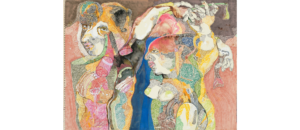 Spread the loveMohan Samant was born in 1926 in Bombay. His family wanted him to become an engineer. Initially, he…
Spread the loveMohan Samant was born in 1926 in Bombay. His family wanted him to become an engineer. Initially, he… - Laxmi Shankar RajputSpread the loveLakshmi Shankar Rajput was born on 6 October 1919 in a Rajput family of Indore. He took art…
- Ravana addresses Sita in the garden of Lanka| Guler-style
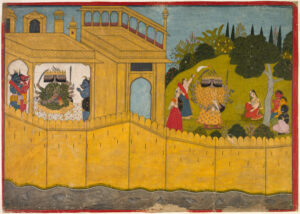 Spread the lovePainting: Ravana addressing Sita in the garden of Lanka, from chapters 53 and 54 of Aranya Kanda (Book…
Spread the lovePainting: Ravana addressing Sita in the garden of Lanka, from chapters 53 and 54 of Aranya Kanda (Book… - Somnath Hore
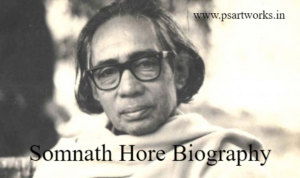 Spread the loveSomnath Hore was born in Chittagong (now Bangladesh) in 1921. He was a very talented student since childhood…
Spread the loveSomnath Hore was born in Chittagong (now Bangladesh) in 1921. He was a very talented student since childhood… - Satyen Ghoshal
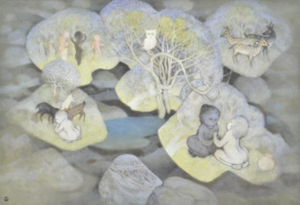 Spread the loveGhoshal had artistic talent since childhood. He not only obtained a diploma with distinction from the Government School…
Spread the loveGhoshal had artistic talent since childhood. He not only obtained a diploma with distinction from the Government School… - P. L. NarsimhamurtySpread the loveShri P.L. Lakshmi Nrisimhamurthy is one of the well-known painters of Andhra Pradesh. He was born in Battalanka…
- K. Madhav Menon
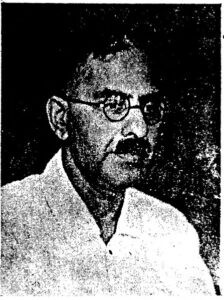 Spread the loveK. Madhavamenon One of the painters from Kerala who has made a notable contribution to contemporary Indian art…
Spread the loveK. Madhavamenon One of the painters from Kerala who has made a notable contribution to contemporary Indian art… - Caves of IndiaSpread the loveWorld famous caves of Ajanta, Chaitya Cave Bihar Cave Ajanta Caves The world-famous caves of Ajanta are located…
- Biren De
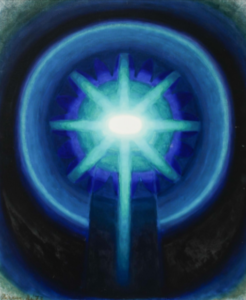 Spread the loveViren De was born on 8 October 1926 in Bengal. He received art education from the Government College…
Spread the loveViren De was born on 8 October 1926 in Bengal. He received art education from the Government College… - Gulam Rasool Santosh | Gulam Rasool Santosh Artist Biography
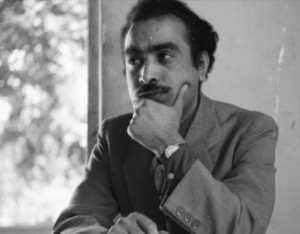 Spread the loveGhulam Rasool Santosh was born in Srinagar (Kashmir) on 19 June 1929. His father was in the police…
Spread the loveGhulam Rasool Santosh was born in Srinagar (Kashmir) on 19 June 1929. His father was in the police…



